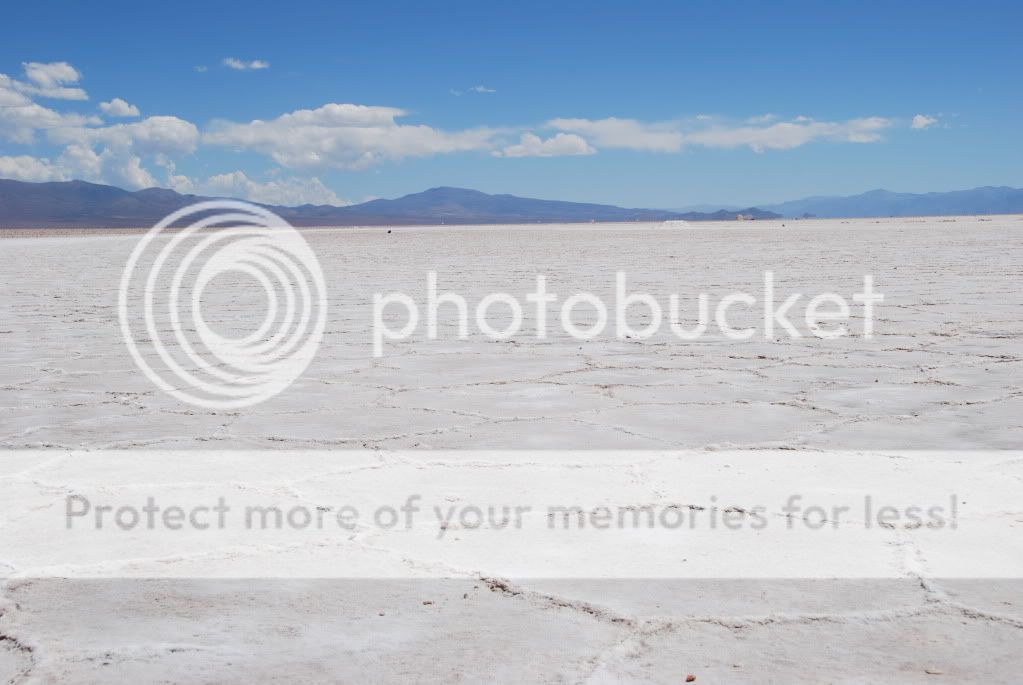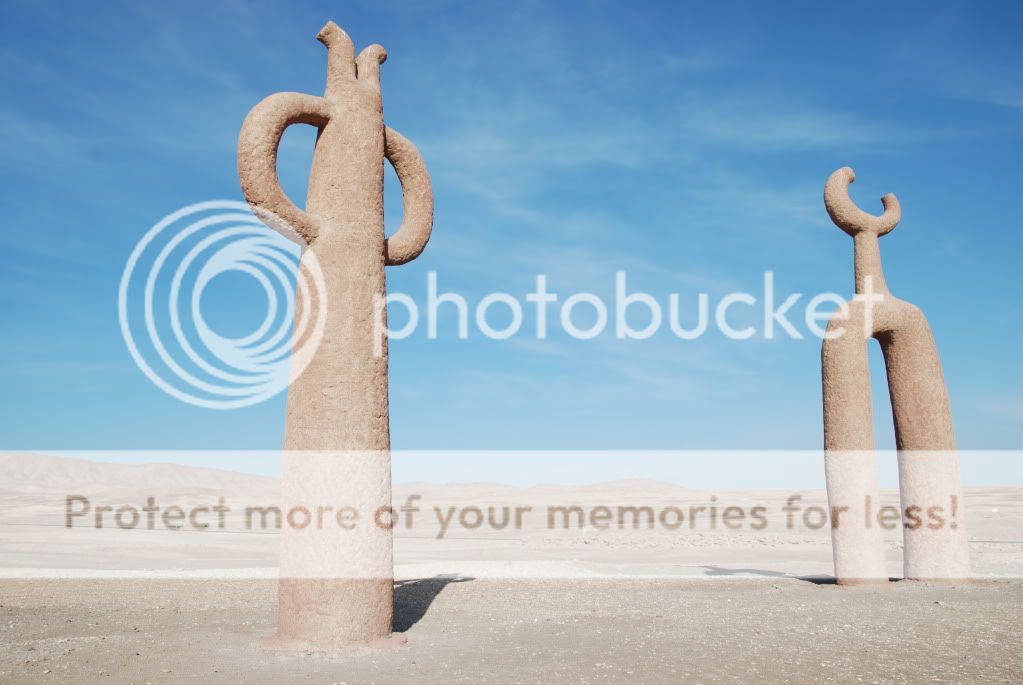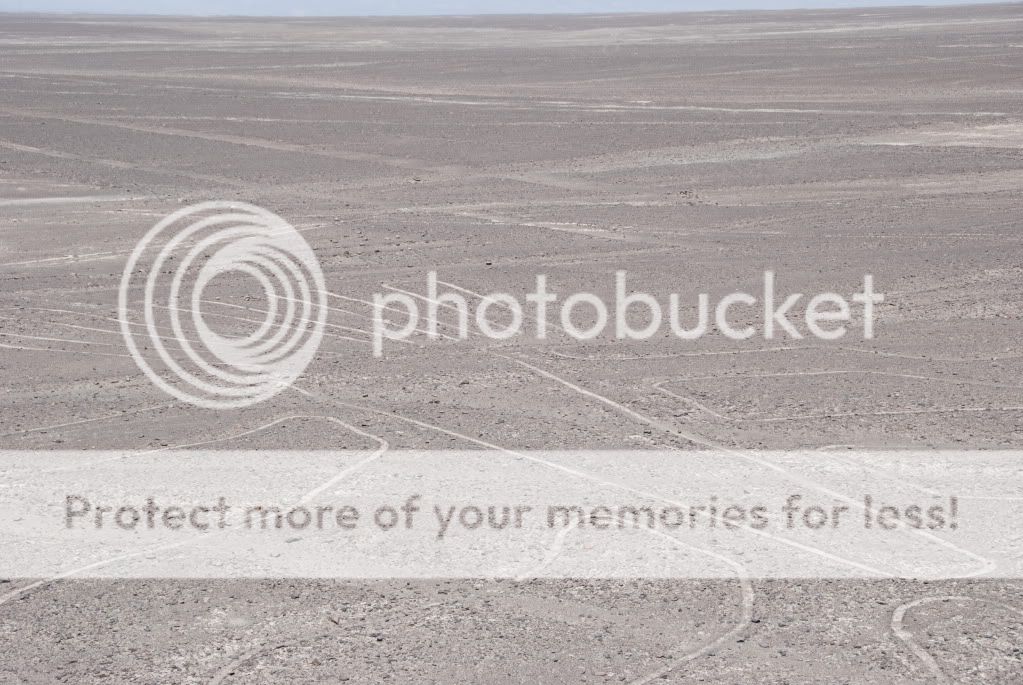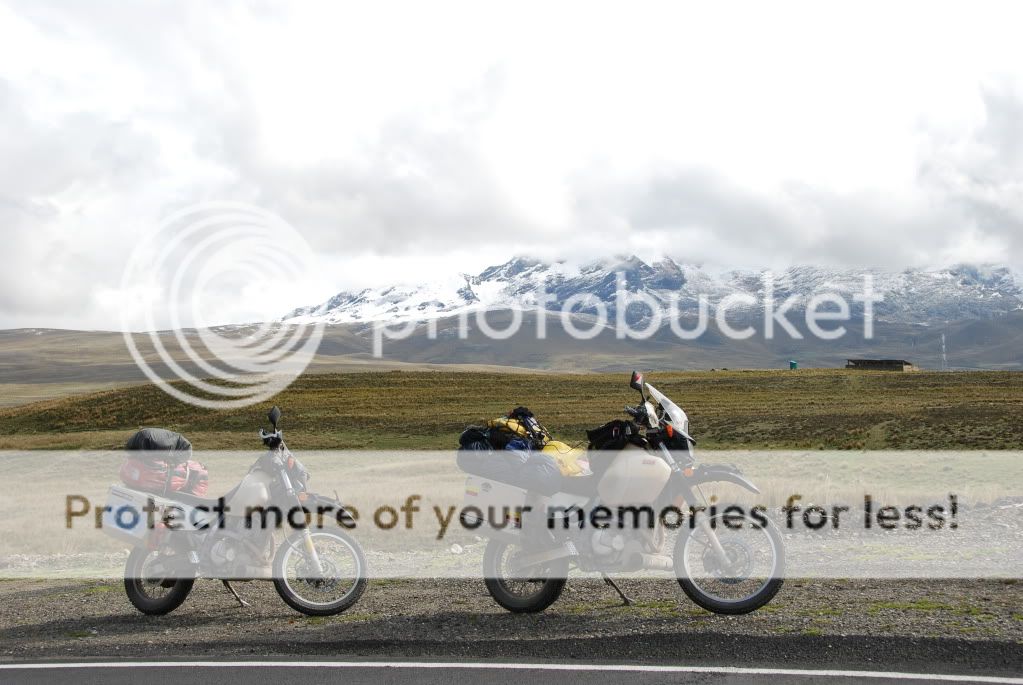I think while in Argentina Daryll and I are experiencing our “15 minutes of fame”. Here we are treated like celebrities. So many people kindly want to talk to us, wave to us and take our photo. We are in mid-summer here in Argentina and we’ve been meeting many people touring their own country while on vacation. People are very outdoorsy and camping is widely available. Everywhere we go we have segments of the following conversation, all in Spanish of course!
Where are you from? (They guess that Daryll is from Brazil and I am from Germany) How long did it take?
Where are you going? How long will it take?
What is the make of your bikes? Are they the same? How much gas in your tanks? How much did it cost?
Are you married? Do you have babies?

During our more lengthy conversations, usually with those who speak English to our delight, we’ve discovered that so many Argentineans have recent European backgrounds, very similar to Canada. So many people have told us that their grandparents are from Belgium, Poland, Germany, Spain ect. You can witness this in people features as well as many are fair haired and blued eyed. Here in Argentina, a custom we’ve come across on the road is that before a long journey you are suppose to place a plastic bottle full of water at a little shrine outside of town to ensure safety during the trip. Since we have a lot of ground to cover, we decided to place our own bottle so as not take any chances for the coming days. Another thing we’ve recognized about Argentineans is their love for a long, leisure, enormous BBQ called Asado. At all the campgrounds we’ve been to all of the sites have their own Asado “altar” – basically a cement oven, 5 feet off the ground with an iron grill.


Using wood or sometimes charcoal they will spend two hours tending cooking meat and toasting bread over the open flame. They will cook steak, chicken, sausage, ribs, and pork and sometimes a combination of all for one meal. It is very hot during the middle of the day to have these BBQs so often they don’t start their fires until 9 or 10 pm. Being around all these lovely smelling cook-outs prompted Daryll and I to go to an all you can eat buffet while in the city of Mendoza to see what all the fuss was about. Now of course with an all you can eat buffet you have to strategize how you are going to attack it. We decided not to eat all day and since the restaurant didn’t actually open until 8:30 pm it was a challenge. It was well worth the wait though as the food was very good. My first stop was the asado meat counter for a steaming piece of steak. It was cooked to perfection and melted in my mouth. I did try a few other things for dinner – the chicken was divine – and for dessert I indulged in another local delicacy – dulce de leche. It’s a thick, milk based caramel-like creamy topping that looks like butterscotch pudding. I had dulce de leche flavored ice cream and crème Brule with a scoop of dulce de leche on top. Yummy! And last but not least since vineyards are plentiful and wine is cheaper than water at $1/liter, no meal is complete without a healthy dose of white or red.

After leaving Mendoza we decided to take a side trip west towards the Chilean border to see Mount Aconcagua (elevation 22,841 feet / 6,962 meters) the highest peak in the America's. It was a beautiful site to see the white snow-covered mountain in the middle of the dry, brown mountain range. Our plan was to camp in the National Park surrounding it as our guidebook indicated it was possible, but upon our arrival we were informed that camping at that park was cancelled last year. No worries, the wind was pretty fierce at the site anyway. It was still mid-day so we rode to find a campsite elsewhere.




Our next camping destination was Canyon de Atuel which we had chosen because Daryll’s GPS indicated some campsites in the vicinity. After talking to people and upon arrival we then realized the area was a local adventure hotspot with whitewater rafting, rock climbing, river kayaking, tubing, and general river fun. We found a free municipal campsite, most of the cities and towns have them but usually you pay a couple dollars to stay, and frolicked in the river.


The next day on our way to Barrancas we met a motorcycling Argentinean couple Jorge and Paula also on their way to Ushuaia. They introduced us to another local favorite – mate – which we see everyone drinking out of fancy cups. We tasted the bitter tea and decided it must be an acquired taste but for now we liked the pot cups and fancy silver metal straws the best. We ended up riding with Jorge and Paula on and off throughout the day but after losing his license plate on some bumpy dirt roads and losing power in his engine, Jorge decided to stop somewhere to have a mechanic look at this bike. I suspect we will meet them again along the way.




As we ride southbound towns are becoming few and far between so while in them we have to make sure we fill up on water, food, wine and especially gas. In Chow Malal we decided to fuel up as the next gas station was another 300km away. I’m sure we could have made it but we would rather be cautious than have to limp into the next town to maybe discover a fuel shortage. In Chow Malal there was only one gas station and they were just filling up their underground tanks. The attendants informed us that it would be an hour before they would be ready to give us gas. We tried to wait right beside the pumps but were told that they need the room to maneuver the big tanker around the station. They asked us to wait across the street and we made them commit to serving us first once the pumps were back open. We weren’t too concerned about the hour wait but we didn’t want to “lose our spot in line” once other people started to come and lineup too. During the hour wait Daryll talked and joked with the gas attendants and thankfully they remembered us when the pumps opened again and we were ushered up to the pump and were ready to go within minutes which was great as another 20 cars had lined up in the meantime!

After 300 km of some more straight road riding through beautiful mountain scenery we arrived in Zapala. While riding around town looking for a grocery store, we noticed another foreign motorcycle rider weaving around town who then pulled up next to us at a traffic light. Here we were introduced to Francis, from France who had ridden from Paris, across Mongolia, Russia, Korea, Japan, Australia and Southern Argentina. He was now making his way up to Canada. Upon meeting us Francis decided to call it a day, although normally he would ride many more kilometers, and decided to budget camp with us. While looking for our site among some paths of puddles, sand and mud I dropped my bike in a mud puddle while making a sharp right turn. The fall was really insignificant but I wanted to mention it as it was my first dump on the trip. My instincts kicked in to turn off the engine and turn off the battery but I forgot to grab the camera! There was no damage to me or the bike just a bit to my pride as when I tried to lift the bike, even after turning the handlebars so my tire was pointing to the sky, I could not lift it upright, only enough to keep the gas from leaking out of the tank. I figured in this circumstance my adrenaline would kick in to give me super strength to lift it, but this was not the case and Francis came around the corner to my rescue to help me lift upright. Thanks Francis! Once we found a campsite we met two more friends Nicolas and Inaki from Argentina who were cycling from the Atlantic east coast of Argentina to the Pacific west coast of Chile. They had been on the rode for 18 days, riding about 70 km per day, and had approximately 10 days left of their trip. Boy did they have will power and we were very impressed with their efforts and the description of their joy after summiting their first of many mountains. After their long riding day they still had the stamina to ride back into the town and grocery shop for dinner and at 10 pm at night began making an asado BBQ to cook their sausages. They gave us tips to slow cook using wood and Daryll and I took notes as we aspired to one night grill our own – if we can wait that long for dinner! It was a great night for the five of us and a lovely chance encounter of “ships passing in the night” since we were heading due south, Francis due north and the boys due west.

After a quick night of municipal camping in beautiful San Martin de Los Andes where the most exciting thing we did was watch a movie in our tent on the laptop, we arrived in Bariloche via the “mostly dirt and gravel” Seven Lakes road. The scenery on the Seven Lakes road was beautiful and worth the extra effort but would have been much more impressive without the fog and rain we encountered.
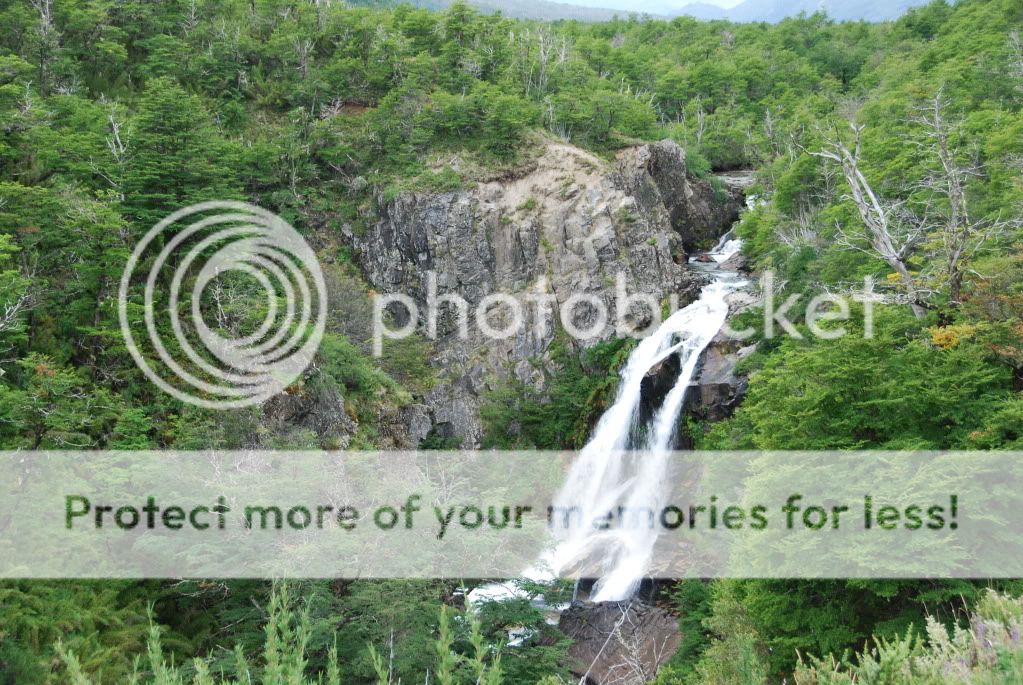
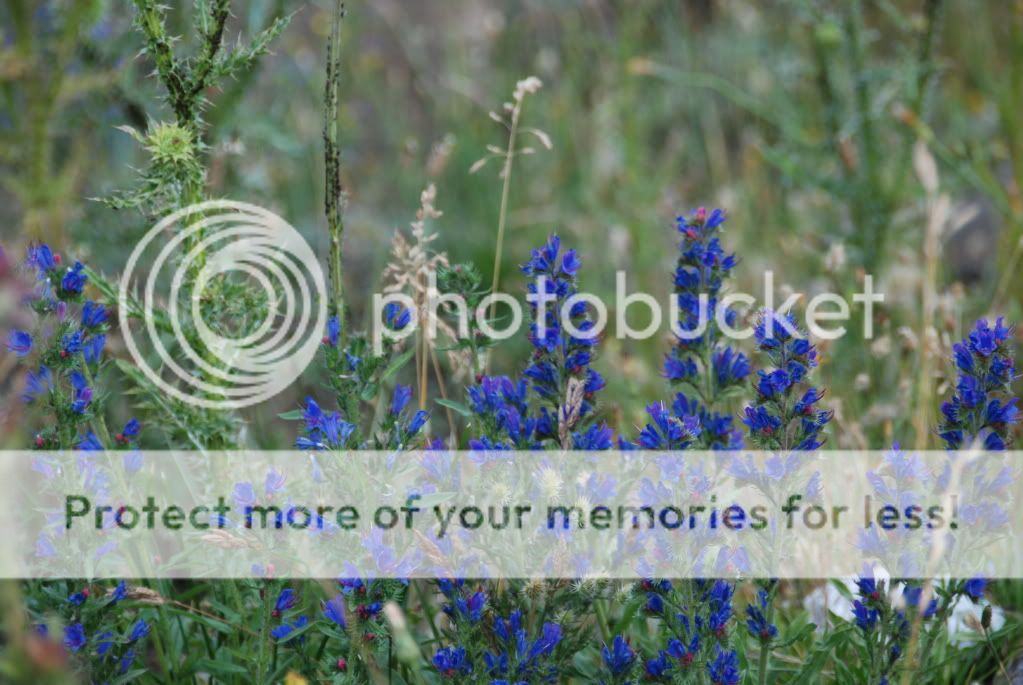


We are now camping near Bariloche in small hippie town Los Cohiues, beside a babbling brook with the cleanest, clearest water I have ever seen. I don’t think I’ll be venturing into the river as the temperature today is probably about 10 – 18 degrees Celsius with a chilly wind blowing. The hot showers at the campground are definitely appreciated. We are going to rest here for a couple more days, explore a bit and Daryll is doing an oil change on both bikes right now as I type. But the most thrilling activity we’ve begun here is cooking our own asado (BBQ) of steak and sausages! After many days of canned tuna and packaged soups, freshly grilled meat is the best! Huge thanks to Nicolas and Inaki for teaching us the Argentinean way of having an asado. Last night we started a big wood fire on the left side of the concrete/brick fireplace and when we created coals hot enough we moved it over to the right side of the fireplace, under the grill, where our freshly butchered meat sizzled to perfection. Then as we were taught, we toasted some buns of freshly baked bread and grilled some potatoes. Our feast was so good we are going to repeat this again tonight and tomorrow! Yum, yum can’t wait and oh, we are properly washing it down with some fine boxed wine:)


New photos added to the Argentina photo album.


